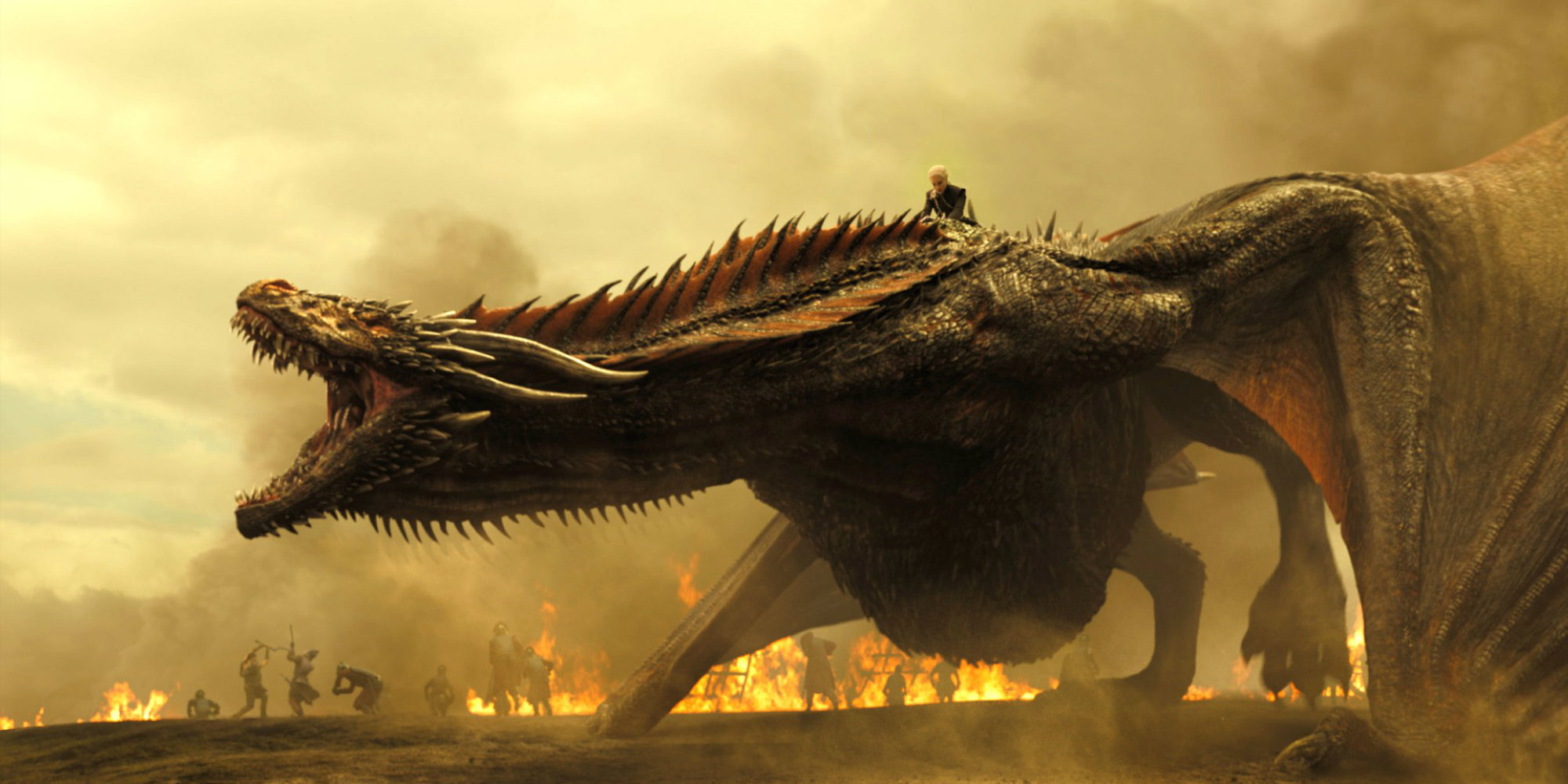‘Game of Thrones” Dragons Aren’t Nukes, They’re an Air Force

Credit to Author: Matthew Gault| Date: Tue, 08 Aug 2017 14:37:38 +0000
After years of waiting, Game of Thrones fans finally got to watch Daenerys Targaryen’s dragons go to war last night and it was beautiful. The Mother of Dragons swept across a Lannister army and set them ablaze. She torched their food supply, burned troops in their armor and ended Queen Cersei’s winning streak. It was awesome, but it also proved the strategic limitations of dragons at war.
We’ve seen Dany’s dragons in battle before, but never in a proper military campaign. Sure, they broke the siege of Meereen and toasted the slavers across the Narrow Sea, but the bringing the beats to the frontlines of a major military conflict is a whole different affair.
For years, military experts, such as George Washington University’s Timothy Westmyer, have speculated that the fire-breathing monsters were the nuclear weapons of the fantasy world. “Dragons are the nuclear deterrent, and only Dany has them, which in some ways makes her the most powerful person in the world,” series creator George RR Martin told Vulture in 2011.
Even The Bulletin of Atomic Scientists—a nonprofit founded by former Manhattan Project scientists—thinks Dragons are a fitting metaphor for nuclear power. “The story teaches a great deal about the inherent dangers that come with managing these game-changing agents, their propensity for accidents, the relative benefits they grant their masters, and the strain these weapons impose upon those wielding them,” the Bulletin wrote in 2014.
Last night’s episode, “The Spoils of War,” offers the chance for us to interpret Dany’s dragon’s differently. Game of Thrones’ dragons are a conventional air force, not a nuclear weapon. At best, Dany’s secret weapons are the military equivalent of an A-10 Warthog—a heavily equipped close air support fighter plane. She’s the only person in this fantasy world with an air force and that gives her an advantage, but no one ever won a war on air power alone.
Nukes were the ultimate disruptive military technology. When America dropped the bombs on Japan in the Summer of 1945 the world changed dramatically. Overnight, one country had the power to destroy cities. As the technology spread and more countries became nuclear powers, the weapons became a deterrent. In the decades after World War II, superpowers wouldn’t take direct military action against geopolitical rivals for fear of creating a widespread nuclear war and destroying civilization.
Dany’s dragons are a boon but they aren’t a deterrent. One of the great advantages of nukes is is that your enemies don’t mess with you. It’s very hard to shoot an intercontinental ballistic missile out of the sky, but Dany’s enemies put at least one hefty spear into the shoulder of her dragon last night. And the dragons haven’t kept Dany’s enemies from sieging Meereen and destroying her navy.
That’s because her dragons operate like a conventional air force. In “The Spoils of War,” Dany leads her Dothraki horde in an an assault against a Lannister supply convoy. The Red Keep needs food to survive the coming harsh winter and they’ve taken it from the recently conquered Highgarden. To get it home, the Lannisters have formed a heavily guarded loot train.
Dany and her troops assault the convoy and her dragon provides close air support. It’s a strategy of air power as old as World War II. Ground troops assault the front and the air power swoops in to destroy and disrupt.
But in reality, strategic air campaigns never win wars. In fact, air campaigns without sustained ground action tend to prolong conflicts. After the invention of the airplane and strategic bombing, Italian military aircraft pioneer Giulo Douhet theorized that you could win a war by destroying civilian centers and forcing the populace to rise up against its government and demand peace.
Both the Axis and Allied powers put Douhet’s theory to the test during World War II. It didn’t work.
The Nazi Luftwaffe bombed Britain for more than eight months during the Blitz. It destroyed London and killed tens of thousands, but it also rallied Brits behind the war effort and was ultimately a strategic failure.
Japan is the most extreme example. America’s bombing campaign of mainland Japan before it used nukes was horrifying. “Sixty-four cities were subjected to urban area saturation tactics, with an average of 43 percent of each burned to the ground,” political scientist Robert Pape explained in Bombing to Win. “Over two-thirds of the civilian population experienced air raids; more than a third had bombs fall in their residential neighborhood.”
America’s bombs were mostly incendiary and Japan’s cities were wooden. The US bombing campaign alone killed 900,000 civilians. That’s almost triple what Germany lost during the air campaigns against it during the end days of World War II.
“Yet despite the brutal suffering, the social and political fabric of Japan did not unravel,” Pape explained. “There were no mass demonstrations against the government, or any other form of popular political activity … the labor absenteeism rate between January and August 1945 was approximately 8 percent, the same rate as estimate for the United States during a similar period.”
The US attempted to bomb Japan into submission and it didn’t work. Not until those bombs were powerful enough to destroy an entire city in a single blow. Dany’s dragons are powerful, but they can’t wipe out an entire city in the blink of an eye. They’re an air force, not a super weapon.
The weakness of strategic bombing campaigns repeated during the US led War on Terror. In Syria, as in Iraq and Afghanistan, an air campaign without ground troops just creates an insurgency. This reflects Dany’s big strategic challenge in Game of Thrones. She’s got the only air force in Westeros and she’s only beginning to learn how to use it.
Get six of our favorite Motherboard stories every day by signing up for our newsletter.